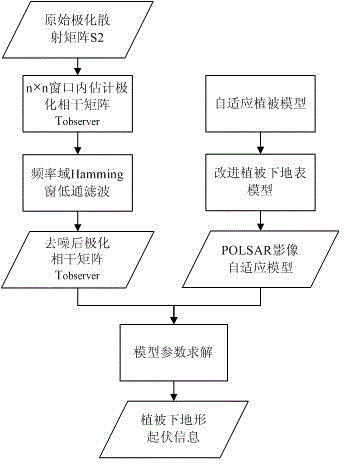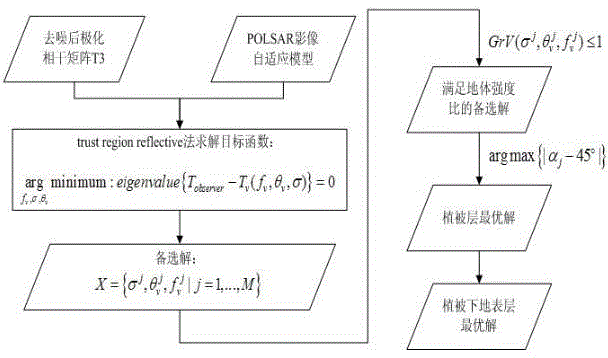Estimation method of terrain azimuth angle under vegetation cover based on polarimetric synthetic aperture radar
An azimuth and vegetation technology, applied in the field of radar remote sensing image processing, can solve the problems of inability to obtain DEM information under vegetation, inability to produce large-scale production, and economic cost constraints.
- Summary
- Abstract
- Description
- Claims
- Application Information
AI Technical Summary
Problems solved by technology
Method used
Image
Examples
Embodiment Construction
[0020] The technical solution of the present invention will be described in detail below in conjunction with the drawings and embodiments.
[0021] In order to extract the terrain under the vegetation, the embodiment of the present invention first needs to apply low-pass filtering to the original POLSAR radar image to remove the unstable random noise in the data. Each observed POLSAR image contains 4 channels of data. Since there is only a single observation of the POLSAR radar image, it is necessary to establish an appropriate vegetation and terrain scattering model under the vegetation to separate the two. This embodiment adopts the internationally well-known POLSAR vegetation layer model, and at the same time integrates the terrain fluctuation information under the vegetation into the terrain model, and uses an appropriate solution method to solve the terrain under the vegetation.
[0022] The technical scheme of the present invention can adopt computer technology to realiz...
PUM
 Login to View More
Login to View More Abstract
Description
Claims
Application Information
 Login to View More
Login to View More - Generate Ideas
- Intellectual Property
- Life Sciences
- Materials
- Tech Scout
- Unparalleled Data Quality
- Higher Quality Content
- 60% Fewer Hallucinations
Browse by: Latest US Patents, China's latest patents, Technical Efficacy Thesaurus, Application Domain, Technology Topic, Popular Technical Reports.
© 2025 PatSnap. All rights reserved.Legal|Privacy policy|Modern Slavery Act Transparency Statement|Sitemap|About US| Contact US: help@patsnap.com



